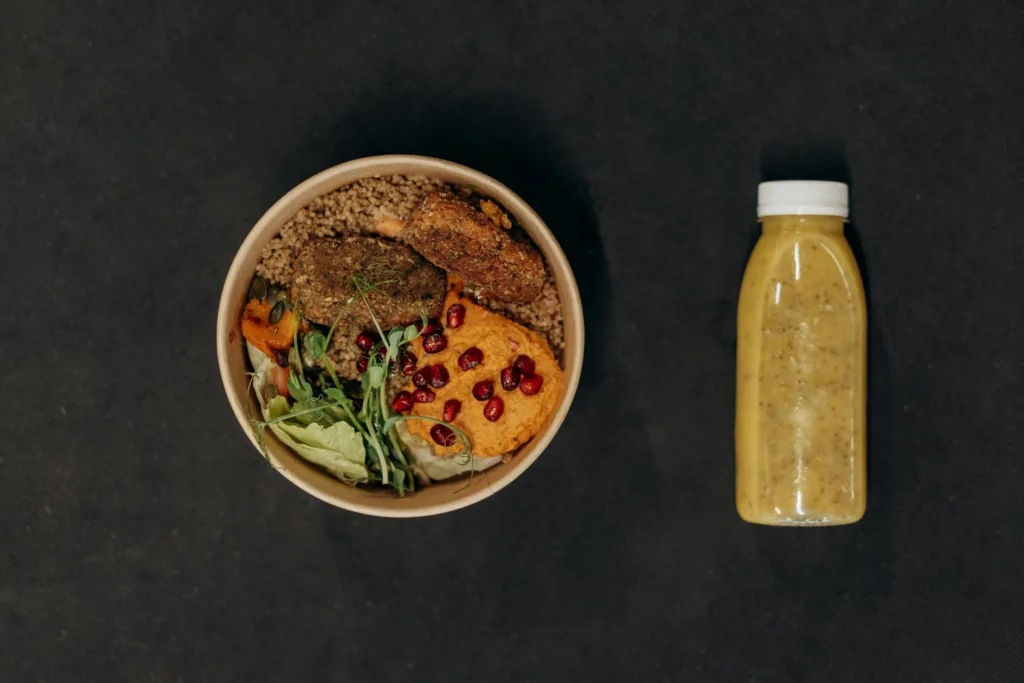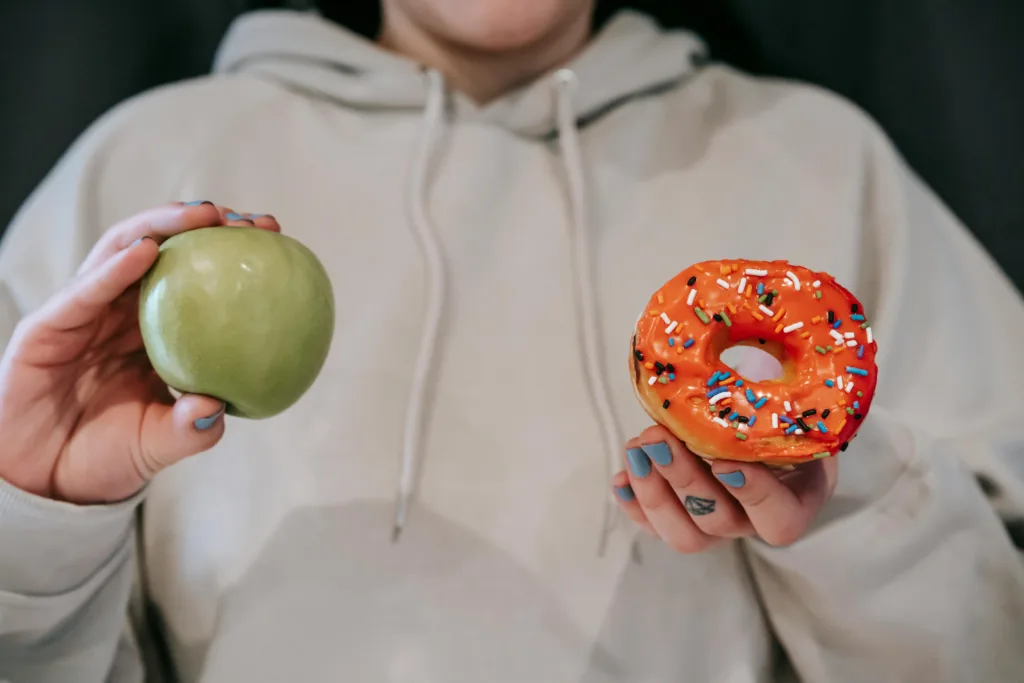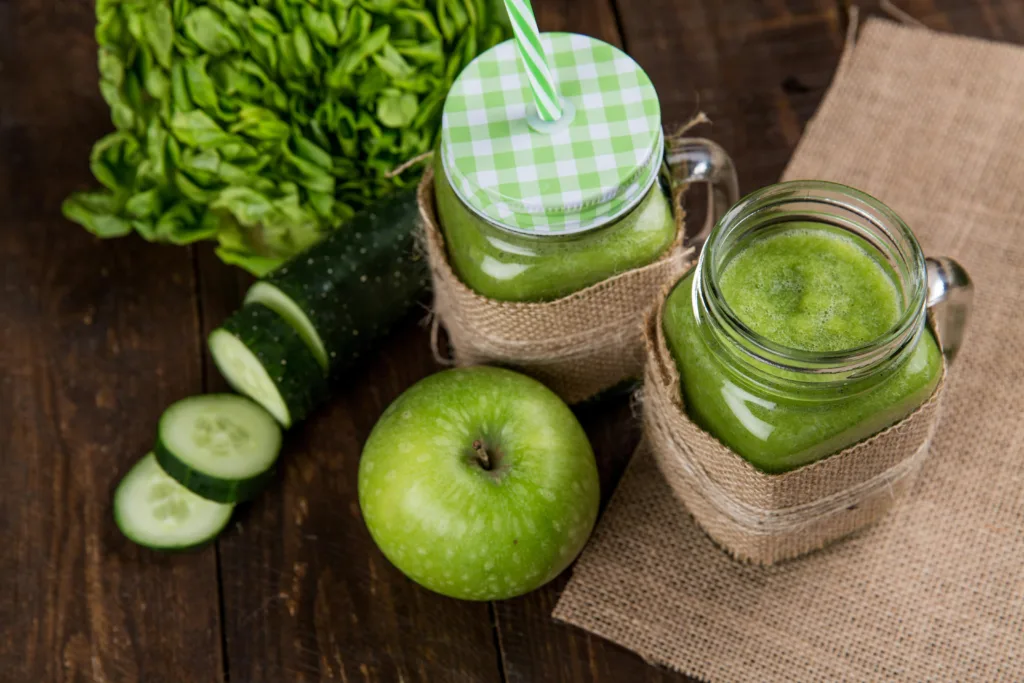Trying to eat healthier doesn’t mean you need to overhaul your entire life. Sometimes, it just starts with getting your portions right and keeping things balanced. A 1,500 calorie meal plan can help you stay on track, feel full, and still enjoy what’s on your plate. It’s not about starving yourself – it’s about picking the kind of meals that make you feel good, fuel your day, and don’t leave you raiding the fridge by 9 p.m.
And that’s kind of what we built ReciMe for. We’re not a calorie-tracking app with endless food logs and numbers everywhere. But if you’re following a specific plan (like 1,500 calories a day), ReciMe makes it so much easier to stick to it. You can save recipes from anywhere, organize them by day or goal, and turn them into a smart grocery list in seconds. No spreadsheet. No chaos. Just food that fits the way you want to eat. Download ReciMe and see how much simpler this whole thing can be.

Download for free from the App Store on iPhone and iPad

What Is a 1,500 Calorie Diet?
A 1,500 calorie diet is exactly what it sounds like – your total food intake for the day adds up to around 1,500 calories. For a lot of people, that’s just the right amount to support weight loss without feeling like you’re constantly hungry or giving up the foods you actually like. It’s not some extreme cleanse or a crash diet – it’s more like hitting the sweet spot where meals still feel satisfying but portions are a little more intentional.
It works best when you’re eating real food: think protein that actually fills you up, fiber-rich veggies, and enough healthy fat to keep things interesting. And no, this doesn’t mean saying goodbye to chocolate or skipping carbs forever. It’s more about balance than restriction. When you plan it right, 1,500 calories can go a surprisingly long way.
How to Calculate If 1,500 Calories Is Right for You
Here’s the thing: 1,500 calories isn’t a magic number that fits everyone. It’s a solid ballpark for a lot of people trying to lose weight, but your ideal number really depends on your body, your routine, and how active you are. If you’re running around all day, lifting weights, or chasing kids up and down the stairs, you’ll probably need more than someone who’s mostly at a desk.
A simple way to figure it out is by calculating your TDEE (total daily energy expenditure). There are plenty of free online calculators that can help – just plug in your age, height, weight, and how active you are. Once you’ve got that number, subtract around 500 calories if your goal is to lose weight slowly and sustainably. If that lands you around 1,500, great. If not, no stress – you can always adjust. The point is to eat enough to feel good and still make progress.
Foods to Eat on a 1,500 Calorie Meal Plan
When you’re sticking to 1,500 calories, it’s not just about eating less – it’s about choosing foods that actually pull their weight. The goal is to stay full, feel energized, and not end up elbow-deep in a bag of chips an hour later. Whole, minimally processed foods make a huge difference here, especially ones that are rich in protein, fiber, or healthy fats.
Here are some staples that work well on a 1,500 calorie plan:
- Non-starchy vegetables like spinach, kale, zucchini, peppers, mushrooms, and broccoli
- Fruits such as berries, apples, bananas, oranges, pears, and melon
- Lean proteins including eggs, chicken, turkey, salmon, tofu, tempeh, and legumes
- Whole grains like brown rice, oats, quinoa, farro, and whole wheat pasta
- Healthy fats from avocado, olive oil, nuts, seeds, and nut butters
- Dairy and dairy alternatives such as Greek yogurt, cheese, and unsweetened plant-based milks
- Flavor boosters like fresh herbs, garlic, lemon, salsa, mustard, and spices
You don’t need to overthink it – just mix and match ingredients you actually enjoy. A little planning goes a long way, and once you get the hang of building balanced meals, 1,500 calories can feel like plenty.

Foods to Limit or Avoid
Let’s be honest – no one wants to live in a world where pizza and cookies are permanently off-limits. But if you’re trying to stick to a 1,500 calorie goal, some foods just don’t give you much in return. You burn through your daily limit way too fast and still end up hungry or craving more an hour later. That’s where a little strategy helps.
Here’s what we usually try to keep in check:
- Ultra-processed snacks like chips, crackers, and packaged sweets that disappear in two bites and leave you wanting more
- Sugary drinks including soda, sweetened coffee, bottled smoothies, and juice blends with more sugar than fruit
- Refined carbs such as white bread, white pasta, and pastries that spike your blood sugar then crash it hard
- Fried foods like fast food fries, mozzarella sticks, and anything that leaves a grease slick on the plate
- Low-fat or “diet” foods pretending to be healthy but often packed with additives, fake sugars, or weird textures
- Desserts loaded with added sugar like ice cream, cakes, and candy bars that are more habit than hunger
It’s not about cutting these out forever – it’s about making them the exception, not the routine. A scoop of ice cream on Friday night? Sure. A daily donut breakfast? Maybe not the best move if you’re trying to stay full and energized. The goal isn’t to be perfect – it’s to make choices that leave you feeling better, not worse.
Sample 1,500 Calorie Meal Plan (7 Days)
A full week of meals that keep you full, not frustrated. Each day includes breakfast, lunch, dinner, and at least one satisfying snack – no mystery foods, no boring repetition. Just balanced, everyday meals that make it easier to stay on track.
Day 1 – Familiar And Easy To Prep
Kicking things off with meals that don’t require a ton of mental energy or unusual ingredients.
- Breakfast: 2 scrambled eggs with 1 tsp olive oil, 1 slice whole grain toast, 1 small apple (360 cal)
- Lunch: Whole wheat wrap with 2 tbsp hummus, shredded carrots, spinach, and cucumber (320 cal)
- Snack: 1 medium apple + 1 tbsp peanut butter (190 cal)
- Dinner: Chicken fajita bowl with 3 oz grilled chicken, ½ cup brown rice, peppers and onions sautéed in 1 tsp olive oil, salsa, and ¼ avocado (500 cal)
- Extra Snack: 1 boiled egg + 5 baby carrots (100 cal)
Total: About 1,500 calories – easy start, nothing overwhelming
Day 2 – Filling And Fiber-Rich
Protein and fiber do the heavy lifting here to keep you full without feeling sluggish.
- Breakfast: Overnight oats with ½ cup oats, ½ cup almond milk, ½ cup blueberries, 1 tbsp almond butter (350 cal)
- Lunch: Kale salad with 4 oz grilled chicken, ½ cup lentils, 1 oz goat cheese, 1 tbsp balsamic vinaigrette (430 cal)
- Snack: 1 boiled egg + ½ cup grapes + 6 almonds (170 cal)
- Dinner: Chickpea-zucchini burger on a whole wheat bun, sweet potato wedges (½ medium potato + 1 tsp olive oil) (520 cal)
- Treat: 1 small square dark chocolate (60 cal)
Total: About 1,530 calories – balanced, satisfying, no crash
Day 3 – Batch-Cook And Chill
Make once, eat twice. This day is designed for anyone who likes to prepare ahead.
- Breakfast: 1 cup Greek yogurt, ¼ cup granola, ½ cup raspberries, 1 tsp honey (280 cal)
- Lunch: Cauliflower taco bowl with ½ cup black beans, ½ cup brown rice, roasted cauliflower (1 tsp oil), salsa, lettuce (340 cal)
- Snack: 1 banana + 1 tbsp peanut butter (200 cal)
- Dinner: 2 salmon cakes, 2 cups spinach salad with 1 tsp olive oil, 1 slice whole wheat baguette (420 cal)
- Extra: 1 clementine + 12 almonds + 1 boiled egg (200 cal)
Total: About 1,540 calories – batch-cooker’s dream day
Day 4 – Crunchy, Creamy, And Colorful
Meals with texture and flavor that still hit the calorie sweet spot.
- Breakfast: 1 slice whole grain toast with ½ avocado and 1 fried egg (310 cal)
- Lunch: Quinoa bowl with ½ cup quinoa, roasted veggies (1 tsp olive oil), 3 oz tofu, 1 tbsp tahini (440 cal)
- Snack: ½ cup raspberries + 1 square dark chocolate (100 cal)
- Dinner: Chicken lettuce wraps with 3 oz grilled chicken, cucumber, 1 tbsp peanut sauce (270 cal)
- Bonus Snack: 1 boiled egg + 1 small pear + 1 tbsp almonds (180 cal)
Total: About 1,500 calories – fresh, crunchy, super doable
Day 5 – Leftovers That Still Hit The Spot
Reusing a favorite lunch from earlier in the week because why not?
- Breakfast: ½ cup muesli with ½ cup almond milk and ½ cup strawberries (220 cal)
- Lunch: Cauliflower taco bowl (leftover from Day 3, approx. 340 cal)
- Snack: 1 oz cheddar + 1 small apple (200 cal)
- Dinner: Spinach and artichoke ravioli (1 cup) with ½ cup marinara sauce and 1 cup steamed broccoli (460 cal)
- Extra: 1 boiled egg + drizzle of olive oil on broccoli (80 cal)
Total: About 1,500 calories – simple, nothing wasted
Day 6 – Comfort Food That Doesn’t Break The Plan
Warm meals with good textures, big flavors, and nothing too fussy.
- Breakfast: Veggie scramble (2 eggs + mixed veg + 1 tsp olive oil), 1 slice toast, 1 small orange (370 cal)
- Lunch: Veggie sandwich with hummus, tomato, lettuce, cucumber on whole grain bread (320 cal)
- Snack: 1 boiled egg + 10 almonds (150 cal)
- Dinner: Curried sweet potato and peanut soup (1 cup) with 1 slice whole wheat baguette (400 cal)
- Add-On: 1 tbsp Greek yogurt or some sliced cucumber (60 cal)
Total: About 1,500 calories – cozy and still on track
Day 7 – Chill And Satisfying To The End
No overthinking, just solid meals that wrap the week up right.
- Breakfast: Egg-in-a-hole (1 egg + 1 slice bread) with ¼ avocado on the side (260 cal)
- Lunch: Leftover soup (1 cup) and side salad with lemon, olive oil, and sunflower seeds (360 cal)
- Snack: ½ cup raspberries + 1 tbsp almond butter + 1 boiled egg (200 cal)
- Dinner: Spinach and artichoke pasta (1 cup) with a side salad and 1 tbsp parmesan (400 cal)
- Treat: Tea with splash of almond milk + 1 square dark chocolate (70 cal)
Total: About 1,500 calories – soft landing, nothing heavy

Eating Out or On-the-Go: Making Smart Choices
Let’s be real – you’re not going to cook every single meal, every single day. Life happens. You’re rushing between meetings, forgot to prep lunch, or someone suggests takeout and you’re too tired to argue. The good news? You can still stick pretty close to your 1,500 calorie goal without pulling out a calculator at the table.
If you’re grabbing something on the go, look for meals that have a clear protein source, some fiber (think veggies, beans, or whole grains), and not too much sauce drowning everything. A burrito bowl without the sour cream, a grilled chicken wrap, or even a sushi combo with miso soup – all solid options. Most places are happy to swap fries for a side salad, or give you dressing on the side if you ask.
And if you know ahead of time you’re eating out, check the menu before you go. Picking something in advance makes it way easier to avoid that moment of panic when everyone else is ordering burgers. You’re not trying to be perfect here – just mindful. You can still eat well, enjoy the food, and feel good afterward. That’s the win.
Tips for Sticking to a 1,500 Calorie Diet
You don’t need a PhD in nutrition or a perfectly color-coded spreadsheet to stay consistent with a 1,500 calorie plan. But having a few go-to strategies can make the whole thing a lot easier – and way less stressful. Here’s what actually helps:
- Plan ahead, even just a little: You don’t have to prepare meals for the entire week on Sunday, but knowing what you’re eating tomorrow means fewer impulsive food choices when you’re tired or busy.
- Keep your favorite meals on repeat: If something works for you – you enjoy it, it fills you up, and it fits your goal – don’t overthink it. Rotation is great, but repetition isn’t the enemy.
- Build in snacks that actually satisfy: A handful of almonds or an apple with peanut butter beats a 90-calorie air puff snack that leaves you hangry. Go for staying power, not just low numbers.
- Don’t aim for perfection: Some days will be a little over, some a little under. That’s normal. One random snack doesn’t undo your progress. The goal is consistency, not rigidity.
Small habits stack up. It’s not about turning your life upside down – it’s about making little choices that add up to something that feels doable long-term. And maybe even… kind of enjoyable.
Conclusion
A 1,500 calorie meal plan isn’t about restriction – it’s about structure. It gives you a clear starting point, a rhythm to follow, and enough flexibility to still enjoy what you eat. Once you dial in meals that actually satisfy you, this kind of plan becomes less of a “diet” and more of a routine that just… works. And honestly, that’s the goal.
Food that makes sense in your life, tastes good, and supports what you’re trying to do – whether that’s losing a bit of weight, feeling more energized, or just figuring out what’s for dinner without overthinking it.
Keep the process simple, give yourself some grace, and tweak things until they fit you. That’s where the magic happens.
FAQ
1. Can I eat the same meals every day if they hit 1,500 calories?
Yep, if it keeps things simple and you enjoy it – go for it. Just try to include some variety over the week so you’re not missing key nutrients.
2. What if I’m hungry on 1,500 calories?
Hunger usually means your meals need more fiber, protein, or healthy fats. Try bulking up with non-starchy veggies, or add a little more volume with low-calorie swaps like cauliflower rice or leafy greens.
3. Do I have to track every single calorie?
Not necessarily. Some people like to track, others just stick to portion awareness and repeat meals they know fit. Find a balance that doesn’t drive you nuts.
4. Is 1,500 calories too low for everyone?
Not everyone needs to eat this low. If you’re highly active, breastfeeding, or just feeling super low-energy on 1,500, you might need more. Always worth checking in with a pro if you’re unsure.
5. Can I eat out and still follow this plan?
Absolutely. Look for options with lean protein and veggies, ask for dressings or sauces on the side, and skip the sugary drinks. You don’t have to be perfect – just intentional.
6. What if I go over my calories one day?
It happens. It’s normal. One day won’t derail your progress. Just pick up where you left off the next day – no guilt necessary.
